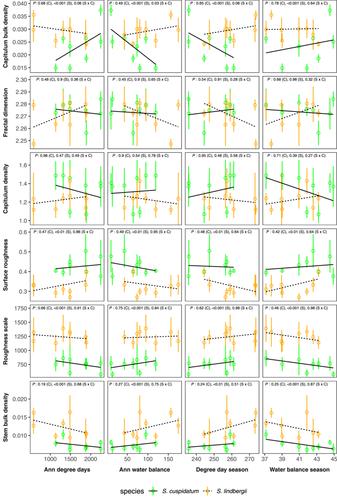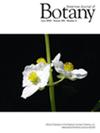Variations in water economy traits in two Sphagnum species across their distribution boundaries
Abstract
Premise
We assessed changes in traits associated with water economy across climatic gradients in the ecologically similar peat mosses Sphagnum cuspidatum and Sphagnum lindbergii. These species have parapatric distributions in Europe and have similar niches in bogs. Sphagnum species of bogs are closely related, with a large degree of microhabitat niche overlap between many species that can be functionally very similar. Despite this, ecologically similar species do have different distributional ranges along climatic gradients that partly overlap. These gradients may favor particular Sphagnum traits, especially in relation to water economy, which can be hypothesized to drive species divergence by character displacement.
Methods
We investigated traits relevant for water economy of two parapatric bryophytes (Sphagnum cuspidatum and S. lindbergii) across the border of their distributional limits. We included both shoot traits and canopy traits, i.e., collective traits of the moss surface, quantified by photogrammetry.
Results
The two species are ecologically similar and occur at similar positions along the hydrological gradient in bogs. The biggest differences between the species were expressed in the variations of their canopy surfaces, particularly surface roughness and in the responses of important traits such as capitulum mass to climate. We did not find support for character displacement, because traits were not more dissimilar in sympatric than in allopatric populations.
Conclusions
Our results suggest that parapatry within Sphagnum can be understood from just a few climatic variables and that climatic factors are stronger drivers than competition behind trait variation within these species of Sphagnum.


 求助内容:
求助内容: 应助结果提醒方式:
应助结果提醒方式:


